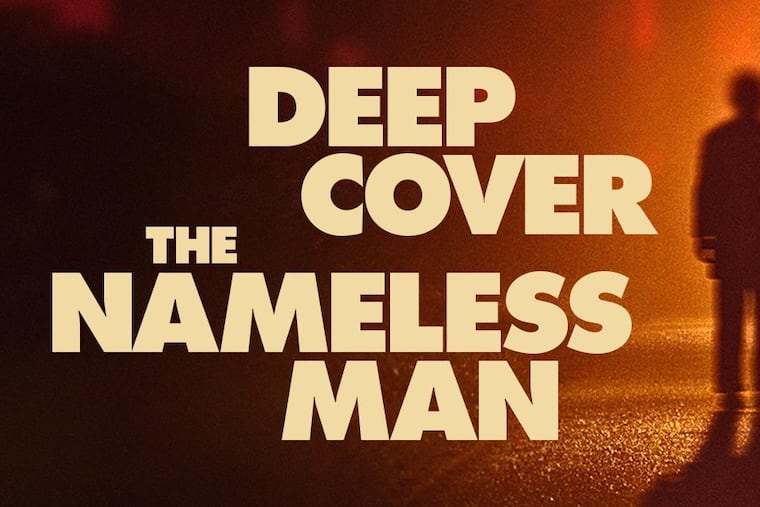A confession to a 1989 murder sent detectives searching for the victim of the hate crime
City homicide detectives reviewed 37 unsolved killings from 1989 and discovered just one that seemed to fit.

At first, the whole story sounded like little more than an urban legend: in the spring of 1989, two white teenagers had driven from Wilmington, Del., to Philadelphia, to search for a Black person to murder. One of the young men would later brag at his senior prom that the trip had been a success. He showed classmates a newly inked spiderweb tattoo on his elbow — a “badge of honor” among racist skinheads that he had earned for committing the crime.
The murky tale resurfaced 15 years later, in 2004, when Scott Duffey, an FBI agent in Wilmington, and Terrance Mortimer, an investigator with the Bureau of Alcohol, Tobacco, Firearms, and Explosives, were assigned an unrelated case involving a reputed skinhead, Thomas Gibison.
People familiar with Gibison suggested that the agents should look into something else: a rumor that Gibison had once been involved in a Philadelphia murder.
The tip was disturbing, but the agents initially had little luck in finding more pieces to the puzzle.
“We literally didn’t know where it was leading,” said Mortimer, now 62.
Then the agents traveled to a mountaintop in Vermont, where they found Craig Peterson, a onetime friend of Gibison’s. In exchange for immunity, Peterson later confessed that the prom story about a racially motivated killing was true, and that he had been in the car with Gibison when the killing occurred.
The agents now had an alleged murderer, Gibison, in their sights — but, bizarrely, they hadn’t yet identified a victim.
There were 473 slayings in Philadelphia in 1989. The quest to find the man who was killed, and the subsequent trial of the accused murderer, is the subject of a new six-part podcast, Deep Cover: The Nameless Man, by reporter Jake Halpern.
How they cracked the case
City homicide detectives reviewed 37 unsolved killings from 1989 and discovered just one that seemed to fit. On April 16, 1989, Aaron Wood, 33, a Black handyman, had been shot in the head under a streetlight near Girard College in the early morning hours.
Peterson told investigators that he had driven his mother’s Chevrolet Beretta to North Philadelphia that night, while he and Gibison searched for a Black person to kill. They spotted Wood crossing Stillman Street near Thompson Street; Peterson alleged that Gibison leaned out of the passenger window and opened fire.
Gibison and Peterson had matching spiderweb tattoos on their elbows.
For the federal investigators, the “nameless man” involved in the crime was the victim, said Halpern. But for Wood’s family, the “nameless man” was the perpetrator. Wood’s family had never been able to figure out why he was slain, and his killing had never been solved.
“You have these two sides: the victim’s family and law enforcement. And they’re each grasping in the dark to put together the pieces,” said Halpern, who spent nine months revisiting the case. “Eventually their storylines collide some 17 years after the fact when [investigators] knock on the door and they say, ‘We think we know who killed Aaron.’”
The first episode of Deep Cover: The Nameless Man aired on April 22, and new episodes will be released each week.
Duffey and Mortimer, now retired from law enforcement, will discuss the case Sunday at the Punch Line Comedy Club in Fishtown, with Jerri Williams, a former FBI spokesperson. Williams interviewed Duffey about the investigation in 2019, on her podcast, FBI Retired Case File Review. (Other former FBI agents will also discuss some of their cases at the event, which will run from 11:30 a.m. to 2 p.m.)
Williams said she found the Wood case particularly moving.
“You don’t want to believe that people are so filled with hate that they would just decide to randomly kill somebody because of the color of their skin,” she said. “This just shows that it happens.”
In November 2006, Gibison was arrested in Newark, Del., and charged with murder, conspiracy, and ethnic intimidation. Two years later, his trial ended in a split verdict that left both sides unhappy; jurors acquitted Gibison of murder, but found him guilty of conspiracy to commit murder and weapons offenses.
Wood’s brother, Tyrone Wood, described the verdict as “a travesty” at the time.
Gibison insisted in court that he was not a white supremacist. He was sentenced to 12 1/2 to 25 years in prison, but his sentence was later reduced by five years due to a judicial oversight that was discovered on appeal.
“He was not involved in any trip to Philadelphia to kill anybody,” Michael Farrell, Gibison’s attorney, said in 2011. “There was no trip to Philadelphia. And the web tattoo was completely unrelated to any homicide.”
“I did not feel like our work was all for naught,” said Duffey, now 56. “We brought [the crime] to light.”
Mortimer recalled a quiet moment that unfolded during Gibison’s trial, in a hallway outside of the courtroom. He was approached by a handful of Wood’s relatives, who explained that they had never known what had happened to Wood on the night he died. Then they thanked Mortimer for his work on the case.
“That broke me, right there,” he said. “That made it the best investigation, in a lot of ways, that I ever did.”